The best running headlamps: tested on roads and trails
For running at dusk, dawn, or through the night, the best running headlamps offer comfort and great battery life
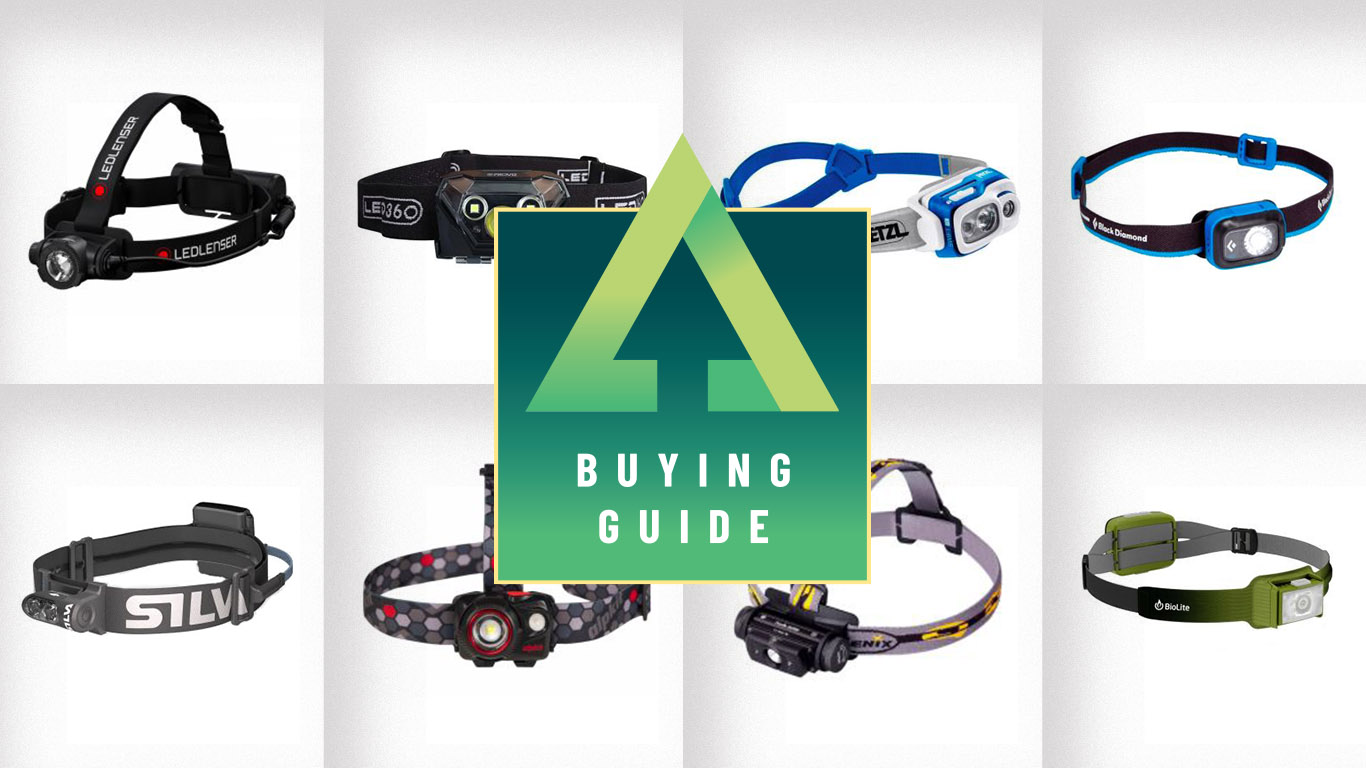
The best running headlamps extend your potential training window beyond the daylight hours. This is particularly important through the winter and into early spring, when most people are unable to get out onto the roads and trails before dark. They're also great for hiking and camping trips too, so you're bound to get plenty of use out of one.
Designed to fit comfortably for a barely there feel, the best running headlamps are more minimal than standard head torches. Zero bounce is what runners demand, and the finest headlamps here go a long way towards achieving this. They also boast excellent battery life, waterproof qualities, multiple beam settings and often come with a backlight to warn road traffic of your presence.
If you haven't tried it, lacing up your trail running shoes and heading off into the night is a wonderful experience, breathing new life into your tried and tested routes. Our testers have certainly enjoying donning these excellent head torches and venturing outdoors to bring you this guide.
We rate the Silva Trail Runner Free H as the best running headlamp around in 2025. Budget conscious runners should take a look at the superb Alpkit Qark and, for a light option, you simply can't beat the Black Diamond Sprint's astonishing 50g / 1.8oz weight.
The quick list
This is the quick list, a snapshot of the best running headlamps available in 2025. To delve deeper into the features and qualities of each featured headlamp, see our more detailed reviews further down the page in this guide.
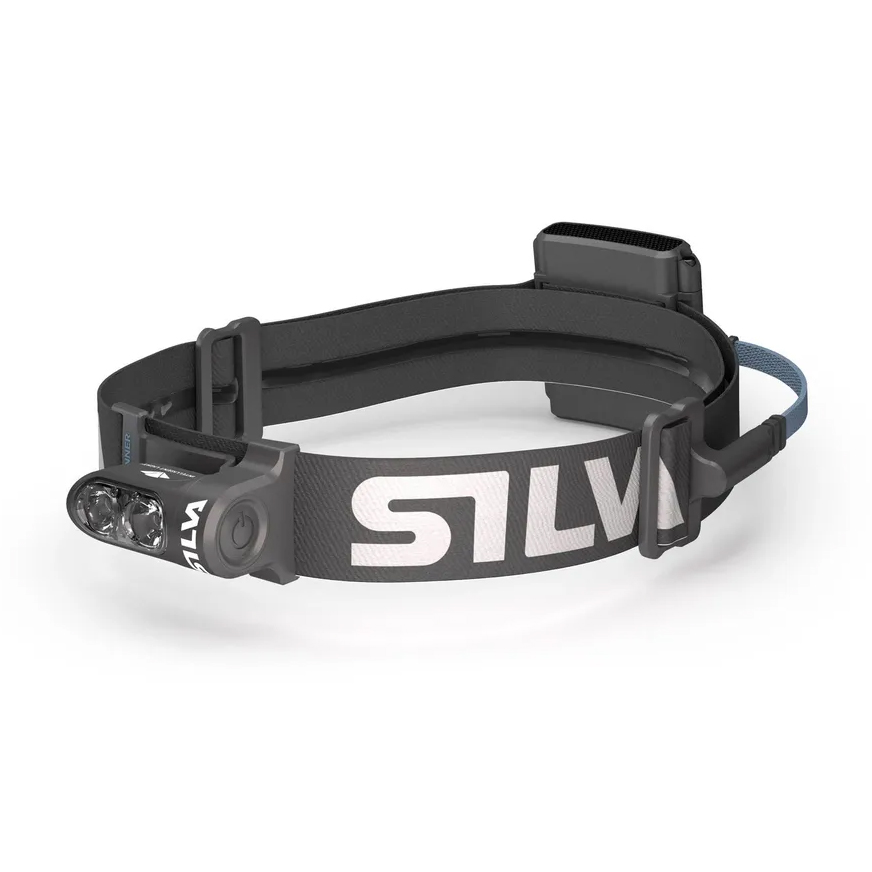
We love the Trail Runner Free H, with its fantastically versatile combination of light output, light weight and battery life for running and hiking
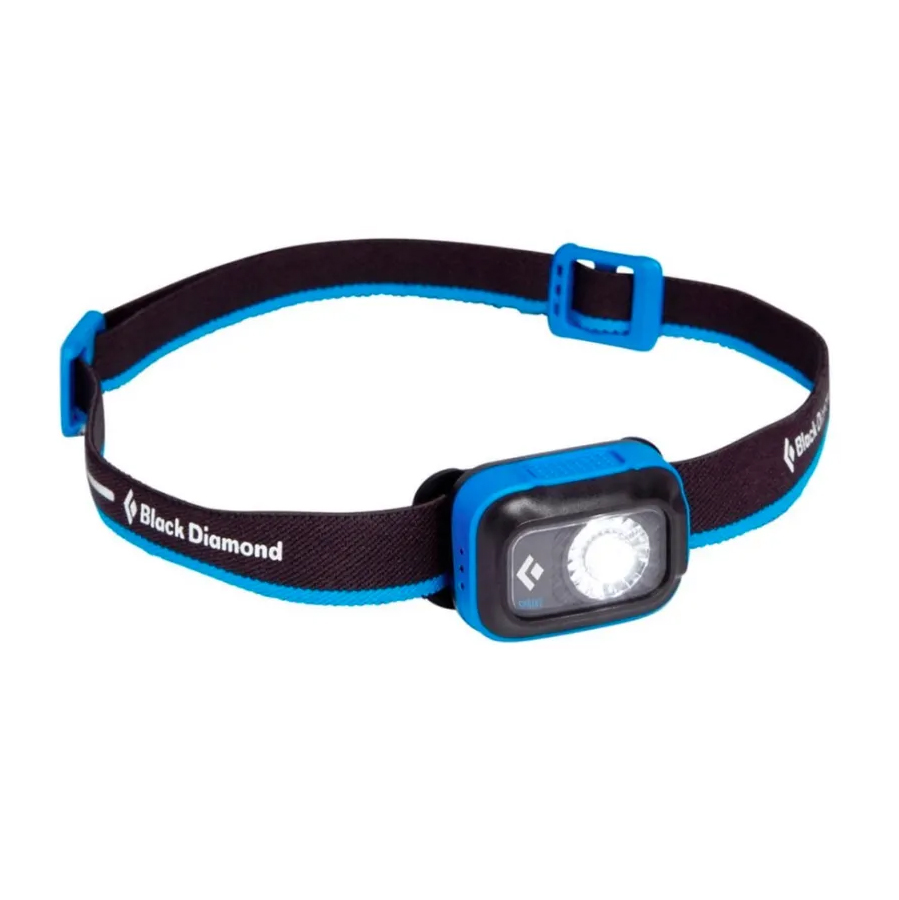
An ultralight, rechargeable, inexpensive and water-resistant headlamp that we think's great for roads and easy trails
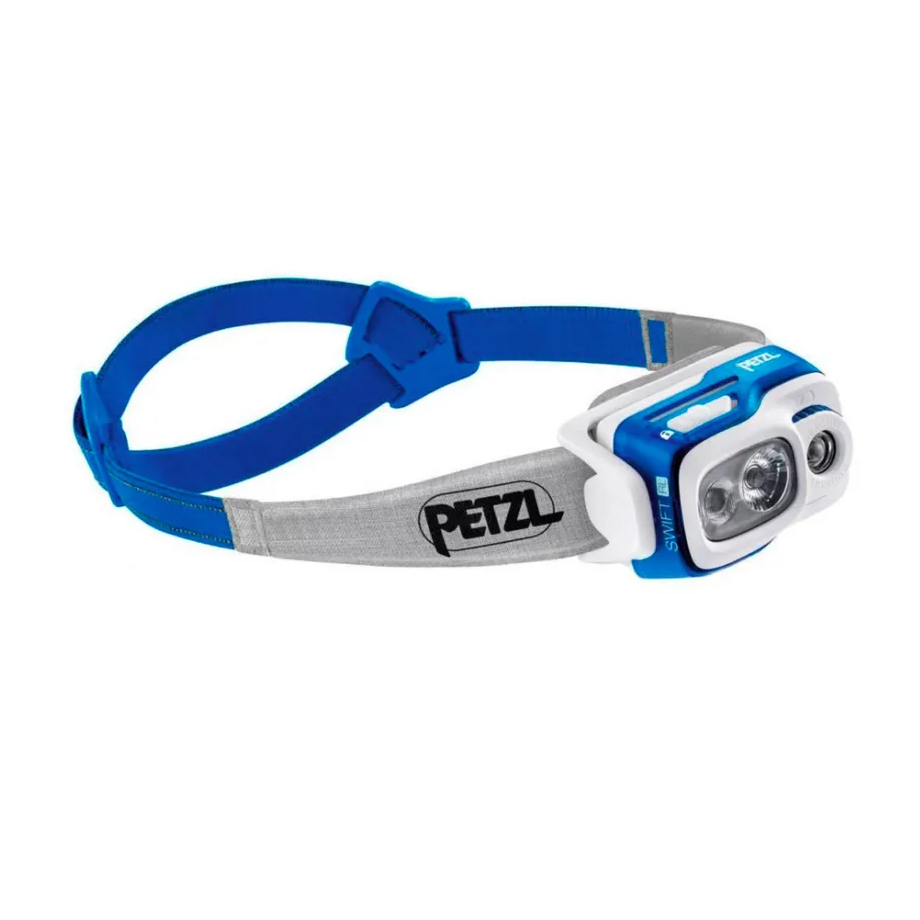
A bright headlamp with a long battery life and a nifty automatic lighting adjustment feature that we thought was clever but also let us down in certain situations
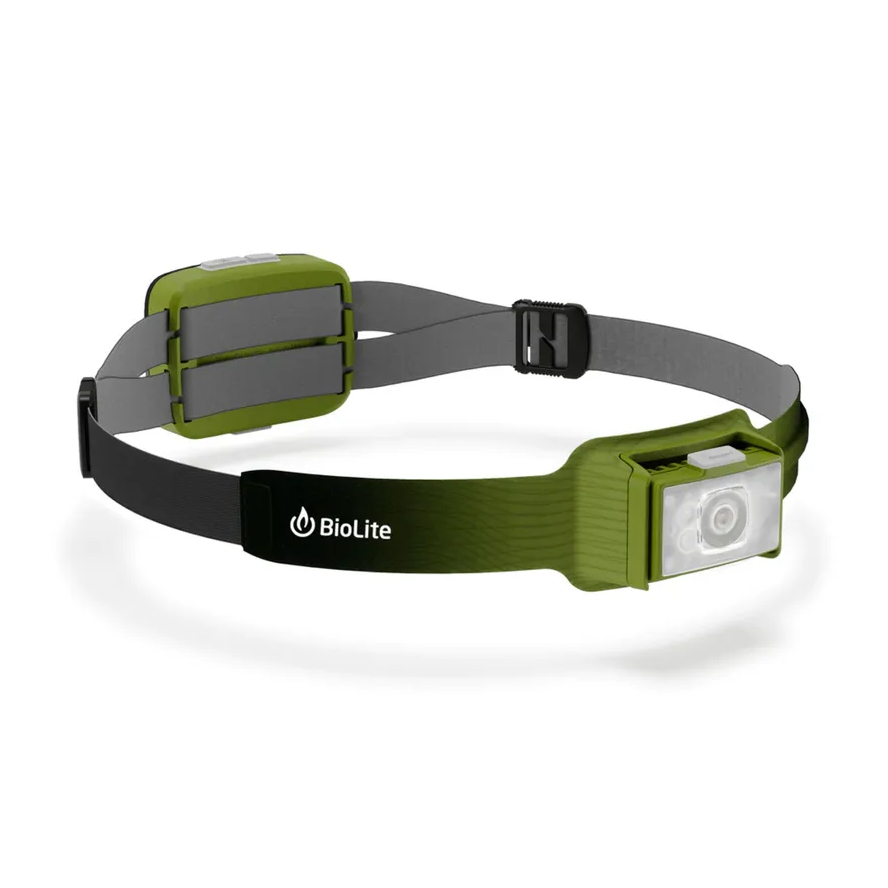
We like this neat little rechargeable head torch with great battery life and bright booster mode from a brand that fund renewable energy
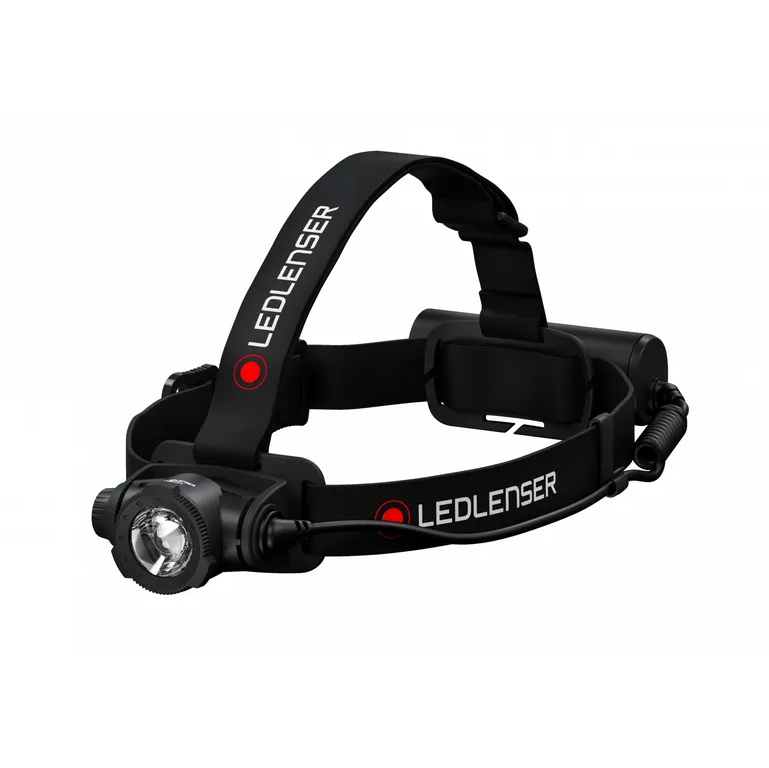
With its superb waterproof qualities, robust build and comfy, wide headband, we like the Ledlenser HR7 headlamp, though it's pretty heavy for runners
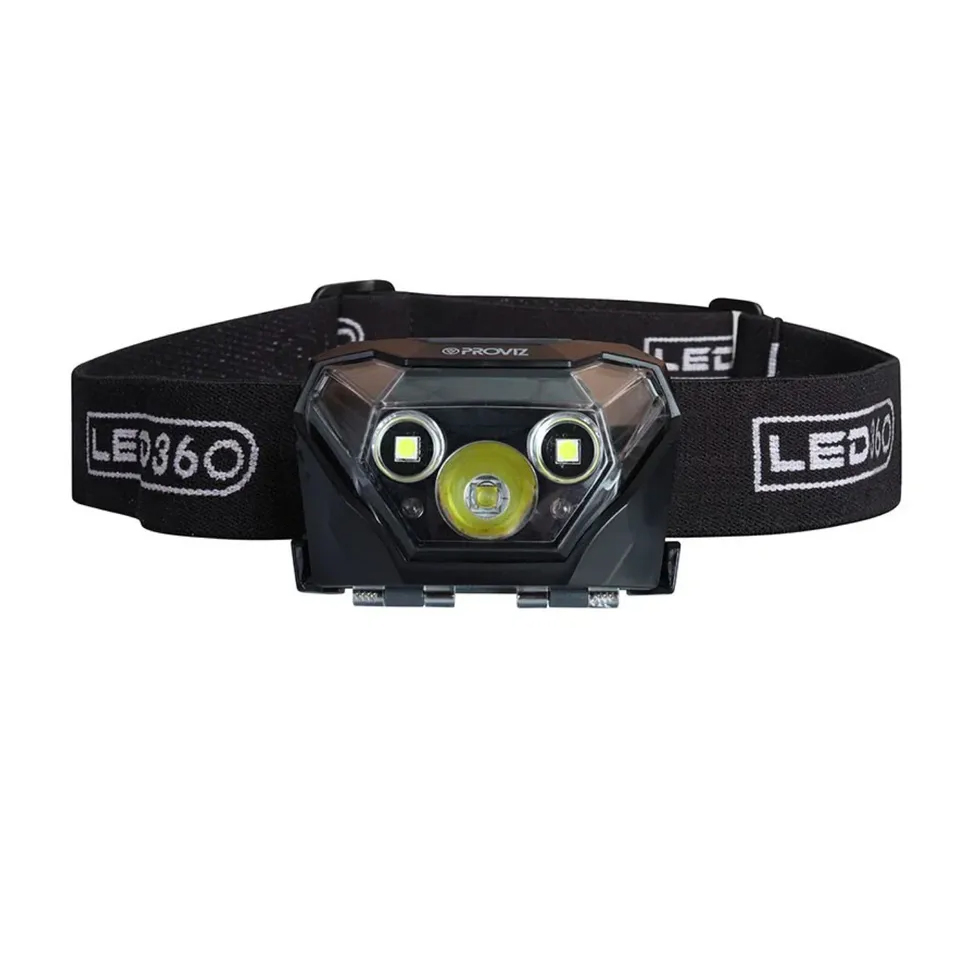
We like this low-priced headlamp, which has three light settings, a strobe and a red beam that runs on three AAA batteries
The best running headlamps 2025
You can trust Advnture
The best running headlamp overall
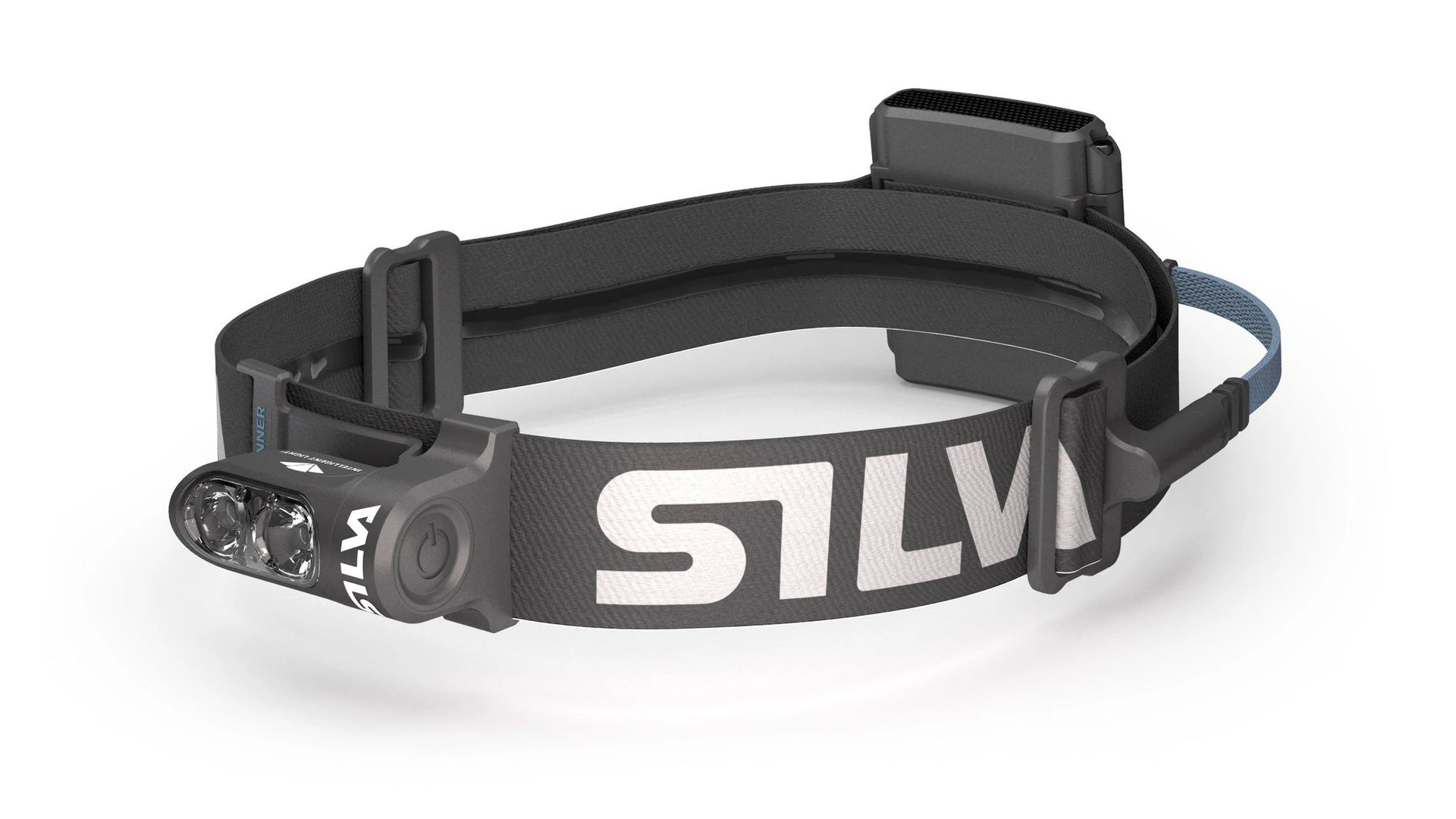
Specifications
Reasons to buy
Reasons to avoid
The Silva Trail Runner Free H is one of our favorite head torches for running because, at 113g / 4oz, it’s light enough to sling in your pack just in case things don’t go to plan; but it also kicks out enough light (max 400 lumens for max 2.5 hours) to be useful on testing mountain terrain.
The H stands for Hybrid – it has a rechargeable battery interchangeable with three AAAs, making it doubly useful if you want to take or buy spares on a long race or remote trip. There’s a neat red light or strobe in the back, button-accessed within the battery pack housing – great for staying visible on dark roads. The Trail Runner Free H also benefits from Silva’s Intelligent Lighting system: a floodlight combined with a longer, more diffused spotlight in one beam, which means you can see the terrain under your feet while at the same time also getting an impression of your surrounding features for navigation.
According to our expert reviewer, "the only minor downside is that the padding behind the lamp is only on one side," so it’s not quite as comfy as previous incarnations of this head torch. It’s still hard to beat, though.
Read our full Silva Trail Runner Free H review
The best lightweight running headlamp
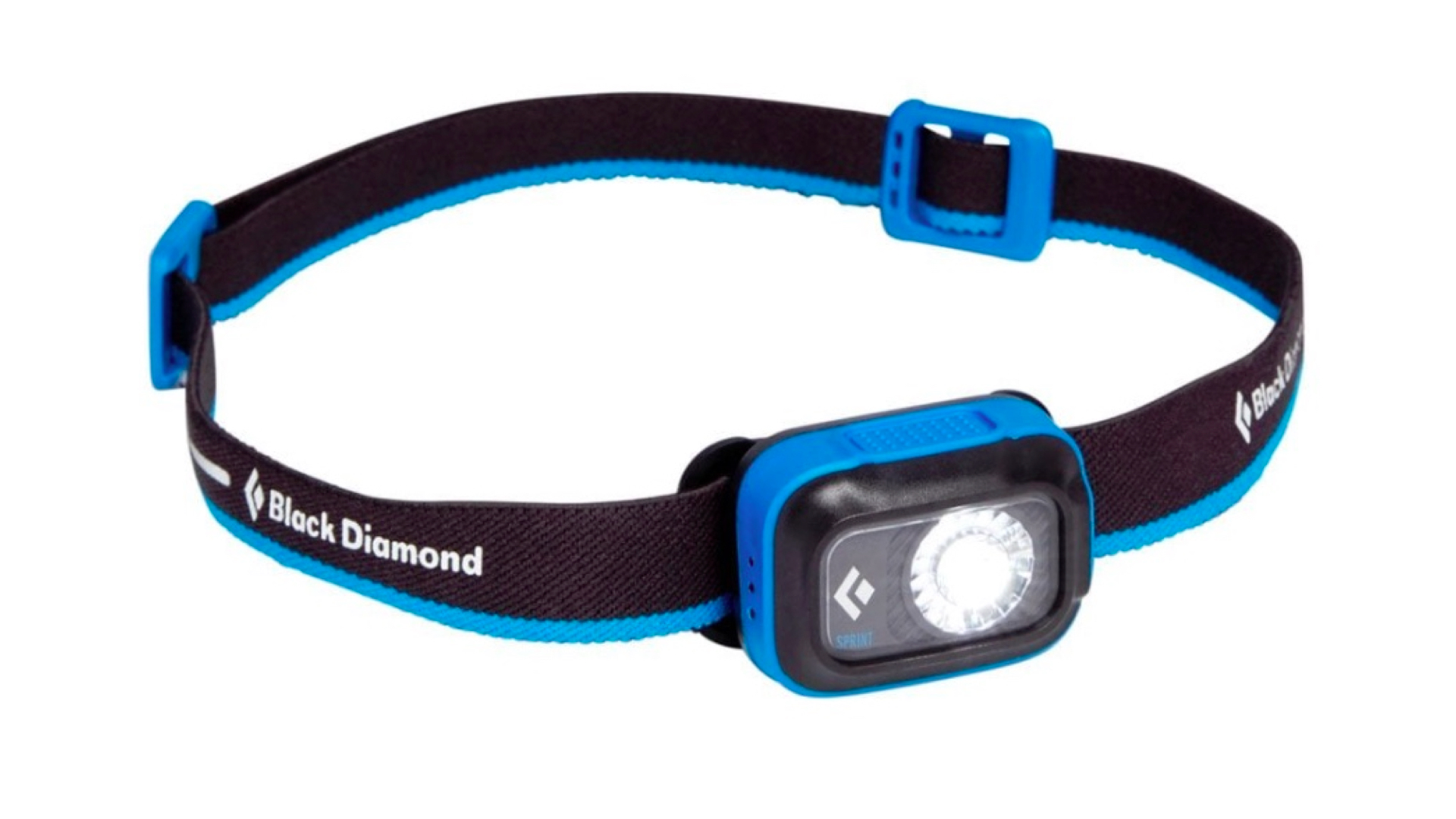
Specifications
Reasons to buy
Reasons to avoid
Wow… the Black Diamond Sprint truly is ultralight. At almost half the weight of the other headlamps on test (50g / 1.8oz), this is definitely one to pop in your pack in case you’re out longer than you expect to be, losing yourself in the beauty of a sunset.
For such a tiny, light headlamp the Sprint packs a serious punch with 225 lumens on max power for at least 1.5 hours, or 120 lumens for four hours on the medium setting. On test, we found that this was plenty bright enough to run happily at night on roads and easy trails, but for more technical terrain, faster off-road running and night navigation most people will want a brighter light.
It’s comfy, very water resistant, has a rechargeable lithium battery and a battery life indicator on the side, but we didn't find the brightness modes intuitive to use, and had to dig out the instruction manual. Our expert goes on to report that "the dimmer function is a little tricky too", while the genius quick-power boost side-tap only works with tech-compatible gloves.
Read our full Black Diamond Sprint review
The best running headlamp with automatic intensity
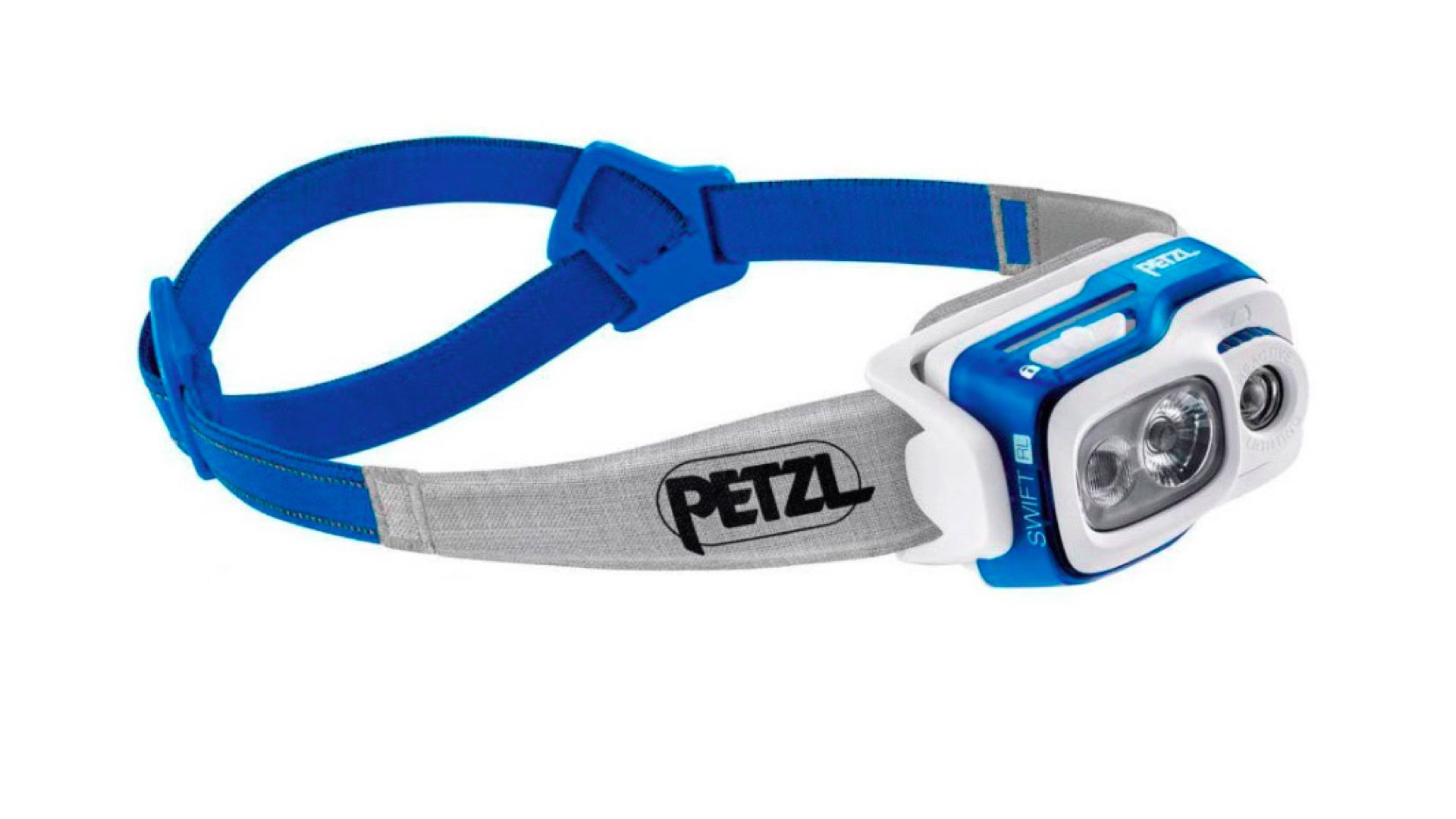
Specifications
Reasons to buy
Reasons to avoid
Petzl have made a great headlamp with the Swift RL, which is lightweight (just 102g / 3.6oz) but gives out 550 lumens of brightness on max power for two hours.
The maximum output is 900 lumens for 2-30 hours (but that is on Petzl’s Reactive Lighting mode, hence RL in the name). Turn this mode on and suddenly the torch detects what brightness it thinks you need, which in some situations works perfectly, saving and prolonging your precious battery and allowing you to focus on your running, climbing or hiking without having to reach up and press a button. However, on test we found that running with other people who were wearing very bright head torches reduced the light coming from the Swift RL when we really did still need it to light up lumpy ground underfoot. Oncoming car headlights and even reflective roadsigns also confuse it into dropping the light level too, suddenly leaving you in the dark.
The lamp is light, but it’s all up-front, which makes it seem a bit top heavy and there’s no rear safety light unless you clip on a small additional light. However, our tester did asser that "the split headband at the back is the definitely the comfiest fit for those with ponytails".
Read our full Petzl Swift RL review
The best running headlamp for sustainability

Specifications
Reasons to buy
Reasons to avoid
Slim and sleek-looking, we found that the BioLite HeadLamp 750 is also very comfy, and the large lamp button is easy to use with gloves on. There are eight light settings in total including red, flood and spotlights up front, while at the back are two buttons, one for the rear red beam and strobe while the other controls the 30-second 750 lumen burst from the front of the headlamp. This is a great brightness boost but our expert thinks that "a button up front would be easier for runners to use."
The main high setting then is 500 lumens, which lasts for two hours on what they call Constant Runtime – aka, definitely 500 lumens the whole time, which is what every headlamp brand should really be quoting here. It then lasts seven hours in Regulated Runtime where it auto-dims gradually on the theory that your eyes adjust to the darkness. It’s a nice battery-saving feature, and if you notice it’s not bright enough, you can always switch back to Constant.
The BioLite Headlamp 750 also has solid ethical credentials, with the company using its profits to help families living in energy poverty across India and Africa. Another point firmly in its favour
Read our full BioLite Headlamp 750 review
The best running headlamp for robustness
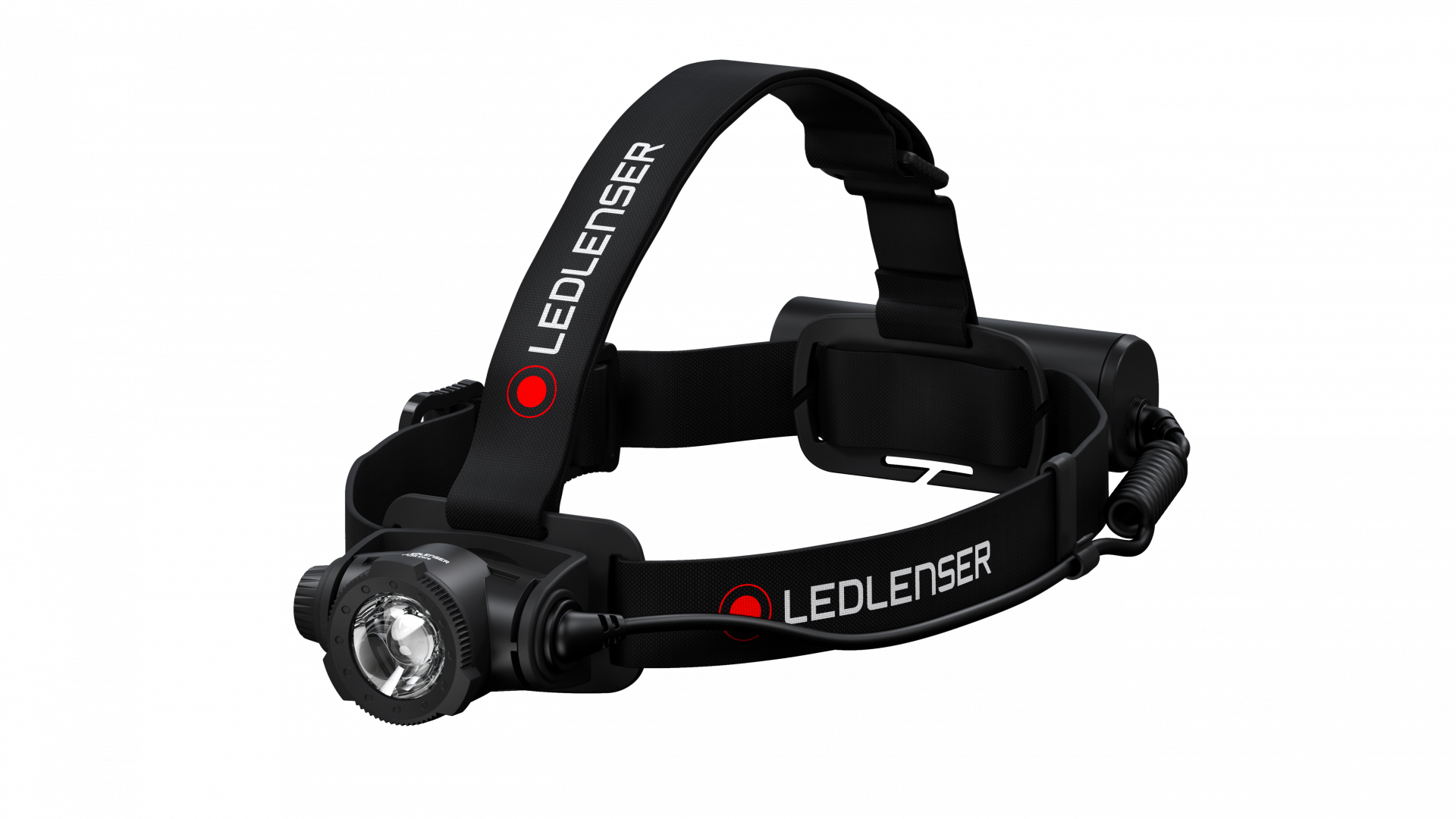
Specifications
Reasons to buy
Reasons to avoid
The two unique selling points of this otherwise much heavier head torch is that: first, it’s completely waterproof; and second, it boasts an innovative swiveling bezel around the lamp, so you can switch from floodlight to spotlight and everything in between – great for personalizing your illumination.
We think this is a wonderful touch and means that you can really quickly and easily tailor the beam to the road, path or trail you’re running on. And yes, you can drop the HR7 Core headlamp into a lake, a puddle or even down a toilet, and it will survive for 30 minutes at up to a depth of one meter. "Fantastic news for clumsy runners!" says our expert tester. As such, it has its own magnetic, waterproof charger connection to USB rather than the more common Micro USB seen in the others here.
The only real downside is that the HR7 is not sleek-looking and is a bit of a heavy beast, at over twice the weight of most of the others here (259g), hence the nice, wide, comfy headband and overhead strap. However this does also mean it should take a fair beating to break. A good one for children or teens, a little less so for running fast and light.
Read our full Ledlenser HR7 Core review
The best cheap running headlamp

Specifications
Reasons to buy
Reasons to avoid
If you need to be careful with your cash, consider the Proviz LED 360 Antares headlamp. It’s nice and bright at 500 lumens (when the three x AAA batteries are new), the headband is very easy to adjust, and we found that it sat very comfortably on our heads.
The button is large and easy to press, with a max spot beam, high-flood beam, low-flood beam, red beam and flashing modes. Beware the large figures claimed for burn time, however. As this torch only uses three AAA batteries, the light output drops off gradually over time, so you don’t get 500 lumens on that highest setting the whole time, especially not towards the end of the battery life.
In contrast, a rechargeable lithium battery (as some of the other head torches in this test use) will kick out the same level of brightness until its very limit, at which point it will either conk out altogether or (as with the high quality brands) fall back to a safety reserve-mode lower light setting that usually lasts a few hours to get you out of a sticky situation. As long as you’re okay with that, our expert tester reckons "this is a fantastic piece of kit for a great price."
Read our full Proviz LED 360 Antares headlamp review
The best running headlamps comparison table
Headlamp | RRP | Weight | Average run time | Water resistance |
Silva Trail Runner Free H | $120 (US) / £100 (UK) | 113g / 4oz | (Low) 12 hours / (High) 2.5 hours | IPX5 (Waterproof) |
Black Diamond Sprint | $65 (US) / £50 (UK) | 50g / 1.8oz | (Low) 4 hours / (High) 1.5 hours | IPX4 (water-resistant) |
Petzl Swift RL | $125 (US) / £100 (UK) | 102g / 3.6oz | (Low) 50 hours / (High) 2 hours | IPX4 (water resistant) |
BioLite Headlamp 750 | $100 (US) / £100 (UK) | 150g / 5.3oz | (Low) 150 hours / (High) 7 hours | IPX4 (water resistant) |
Ledlenser HR7 Core | $130 (US) / £100 (UK) | 259g / 9oz | (Low) 65 hours / (High) 4 hours | IP67 (waterproof for 30mins up to 1m submerged) |
Proviz LED 360 Antares | $70 (US) / £40 (UK) | 98g / 3.45oz | (Low) 73 hours / (High) 20 hours | IPX2 (Splash proof) |
Meet the expert

Claire is one of our leading trail running experts. The co-founder and former editor of Trail Running magazine now runs her own YouTube channel and loves nothing more than hitting the trails. She's tested shed loads of trail running gear in her time and knows what makes a quality headlamp.
How we test the best running headlamps
All of the best running head torches were put to the test by our trail running expert on dark trails and unlit roads and country lanes during winter training runs. She timed how long each one kept running on a full charge on each of its brightness settings, and practiced using each lamp's controls with bare hands and while wearing gloves.
For more details, see how Advnture tests products.
How to choose the best running headlamp
The best headlamps for running can be expensive, so before you make an investment, consider the following important factors…
What brightness do I need for a trail running headlamp?
It’s all very well having a superbright head torch that whacks out 1,000 lumens on a boost setting, but what about its other lighting modes – are they useful too?
For technical trails and night navigation, 400-plus lumens fits the bill. But for easier, slower, less technical trail running, 200 lumens is fine. For road running, or a reserve mode, around the 100–150 mark works well, too.
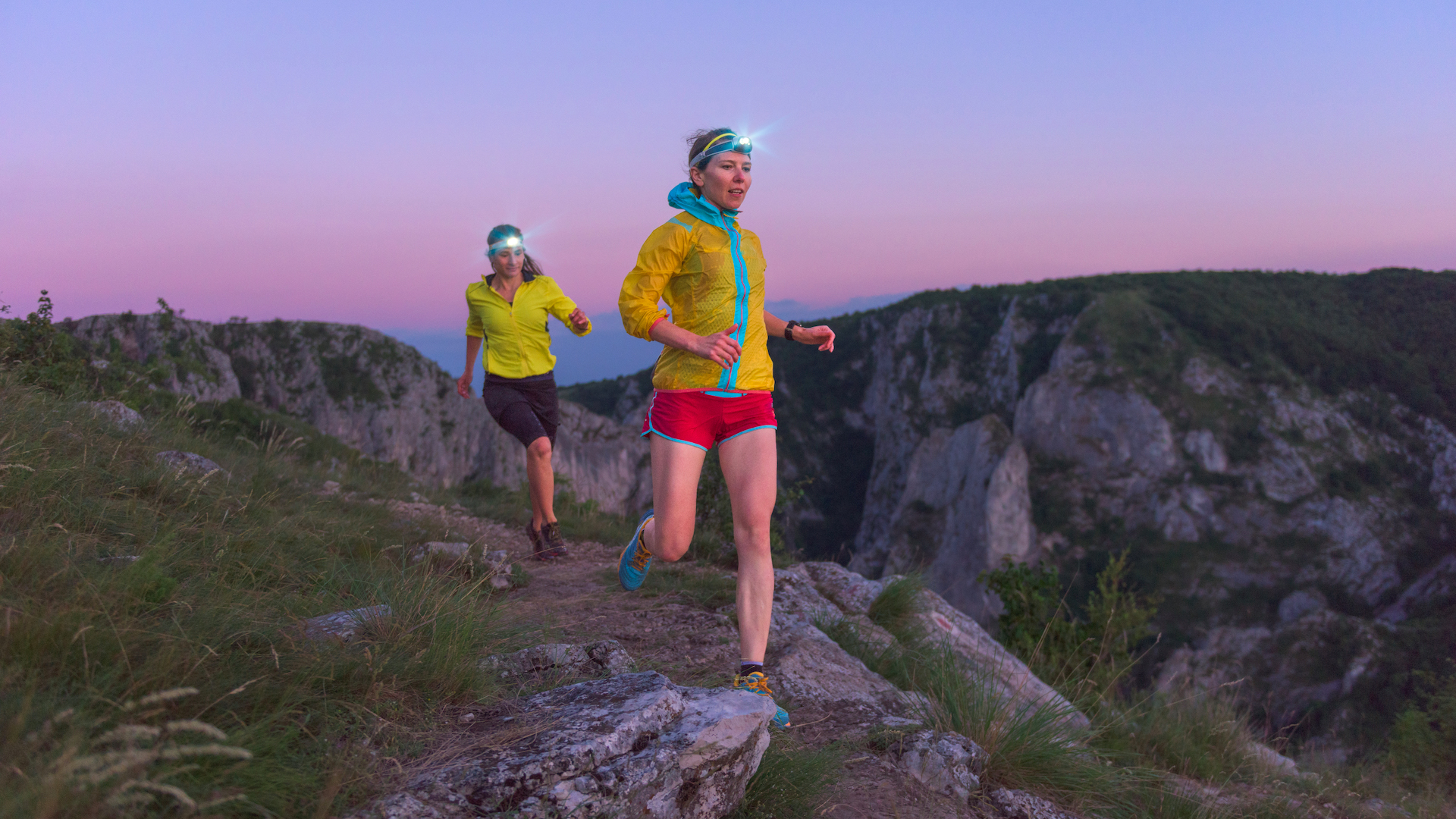
How much battery life does a trail running headlamp need?
Battery weight is the limiting factor in beam life – the lighter you go, the less time and less bright you can expect your lamp to burn. And be aware that regular AAA and AA batteries drop off gradually in power soon after use, whereas rechargeable lithium batteries hold a more consistent level until almost exhausted.
How heavy should a trail running headlamp be?
As above, longer-lasting batteries are unfortunately heavier but there are different designs to offset heavier batteries, like placing the battery pack at the rear of the head for better balance, or even an extension cable so you can pop it in your running pack.
How big should a trail running headlamp be?
Without compromising on the brightness and battery life that’s right for you, the smaller the better in terms of both the lamp and the battery, so that you can easily stow it away in a running pack pocket.
What other features should I look for in a trail running headlamp?
One thing that is better off being larger is the on / off button, which needs to be nice and big so that you can find it easily in the dark and use it with running gloves on. Scrolling through the light settings needs to be intuitive too.
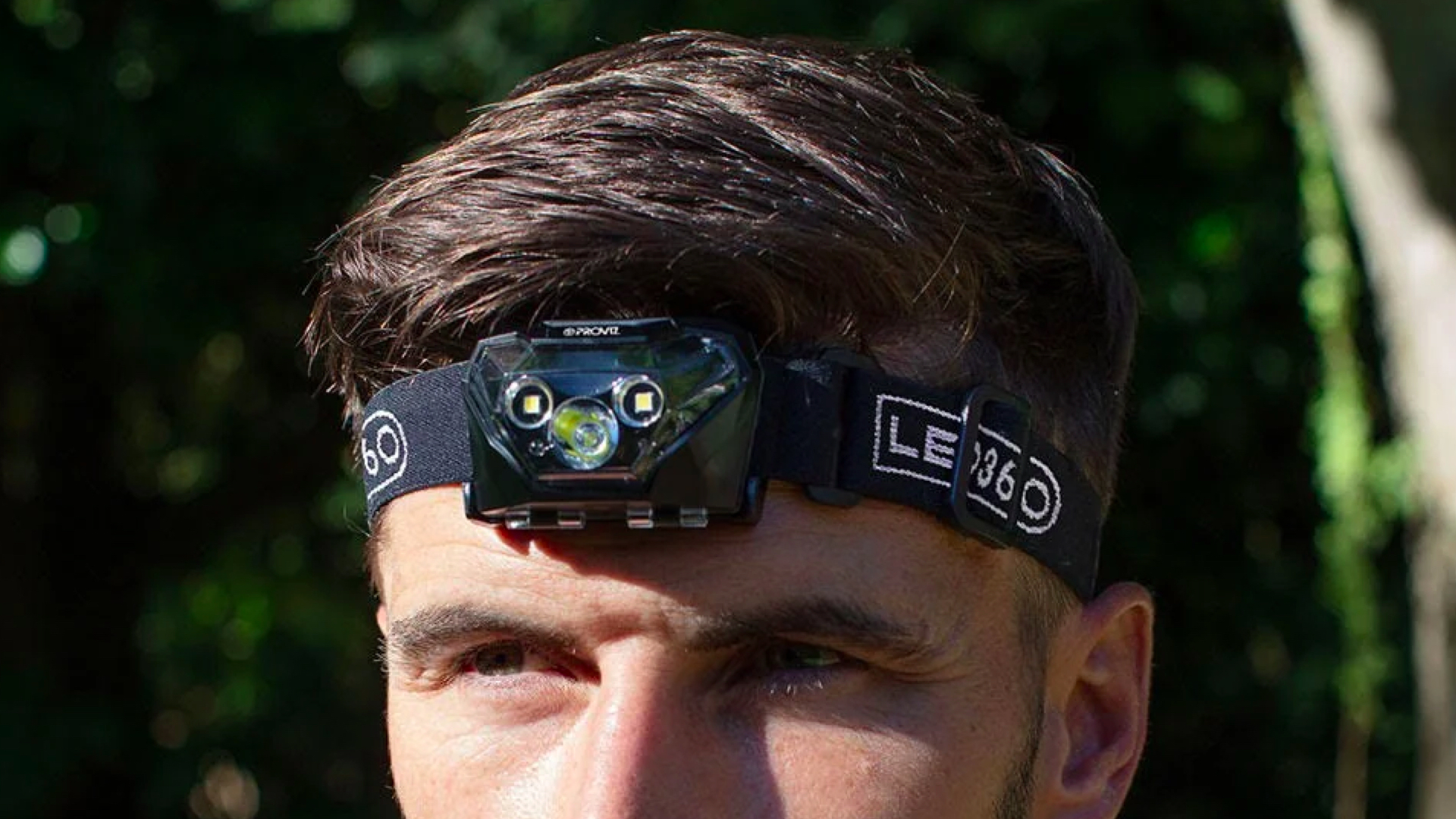
Headband
Make sure the headband is easy to adjust, even when you’re running, so that if you do need to make on trail alterations, you can do so without stopping. An anti-slip silicone gripper inside is brilliant for preventing the headlamp travelling southwards towards your precious nose area!
Rear light
For road running especially, having a small red light on the back of the headband is an excellent safety feature, allowing cars to see you.

No darkness!
Ideally the head torch should cycle through all the brightness modes click-by-click and then repeat them rather than TURN OFF as the last option, so you’re not left in the dark mid-stride. The best way of turning a headlamp on or off is a two-second hold-down of the main button, or similar.
Emergency lighting modes
When a headlamp’s list of features boasts that it can last for 100-150 hours on its lowest setting, that can be a little misleading. What isn’t mentioned is that the lumen output of the lowest setting is probably around five to seven for that length of time. To put that into context, a single candle measures in at 12 lumens; so you’ll have half a candle come any emergency, albeit for a lot, lot longer than a candle would last for! A super-light backup headlamp (like the Black Diamond Sprint) can be a better option than faffing with spare batteries or a charger in the dark, too.
Flood and spotlights
It’s handy to have more control over whether the headlamp emits a flood or spotlight beam so some head torches facilitate this with a swivel bezel or extra button clicking. However, it’s just one more thing to think about and do, so going for a head torch you trust to combine both in one beam is also a good shout.
Water resistance
Most of the best headlamps for running are water resistant, because, for obvious reasons, you don’t want to wear them under a hood. So check that it has an IPX4 rating or higher to make sure it’s rain resistant or even better, waterproof.
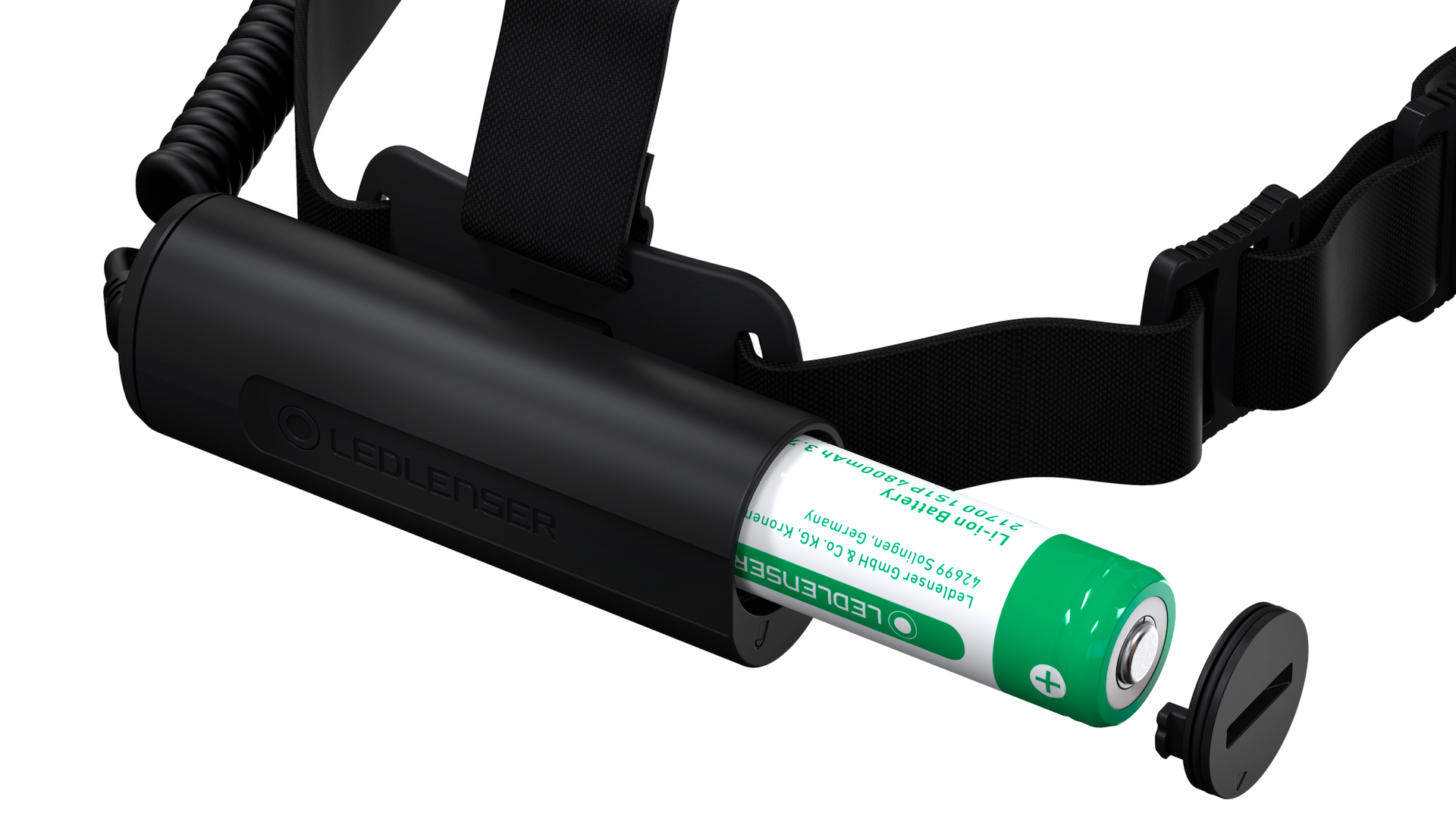
Battery charging
The quicker the better, obviously, and many of the best running headlamps have micro-USB to USB connectors so you have a good chance of finding a spare if you’ve forgotten yours. It’s super handy to know how much battery your head torch has left so look for lights that display its charge status. A low battery warning flash or red light is also useful.
Pass-through charging
This is when the headlamp stays on while you charge it – not common as of March 2022, but hopefully it will be one day as it’s a super-useful feature and saves you money on buying a spare rechargeable battery and / or landfill from not using regular batteries.
Quality
The blurb for a lot of running headlamps leads with the high lumens of their boost mode, then boast about the longest burn time for their lowest mode next – this can be misleading. Some actually claim the impossible, like 500 lumens for 20 hours for example. Look at the leading brands’ outputs as the most-trustworthy reporting on lumens output vs battery life and if cheaper versions seem to offer way more, grow suspicious. Do some digging, read some reviews (oh good, you’re already doing that – sweet). We don’t need to tell you that avoiding hypothermia and a possibly even a mountain rescue call-out on a cold, wet night is worth more than money can buy.
All the latest inspiration, tips and guides to help you plan your next Advnture!
The co-founder and former editor of Trail Running magazine, Claire now runs the YouTube channel Wild Ginger Running, creating films about trail- and ultra-running advice, inspiration, races and gear reviews. An award-winning journalist, writing for outdoor and adventure sports magazines and websites, Claire's first book, The Ultimate Trail Running Handbook (5k to 50k), is out now. Her second, The Ultimate Ultra Running Handbook (50k to 100 miles), is out Autumn 2024. Claire also speaks and presents at events and races.
- Cat EllisEditor

